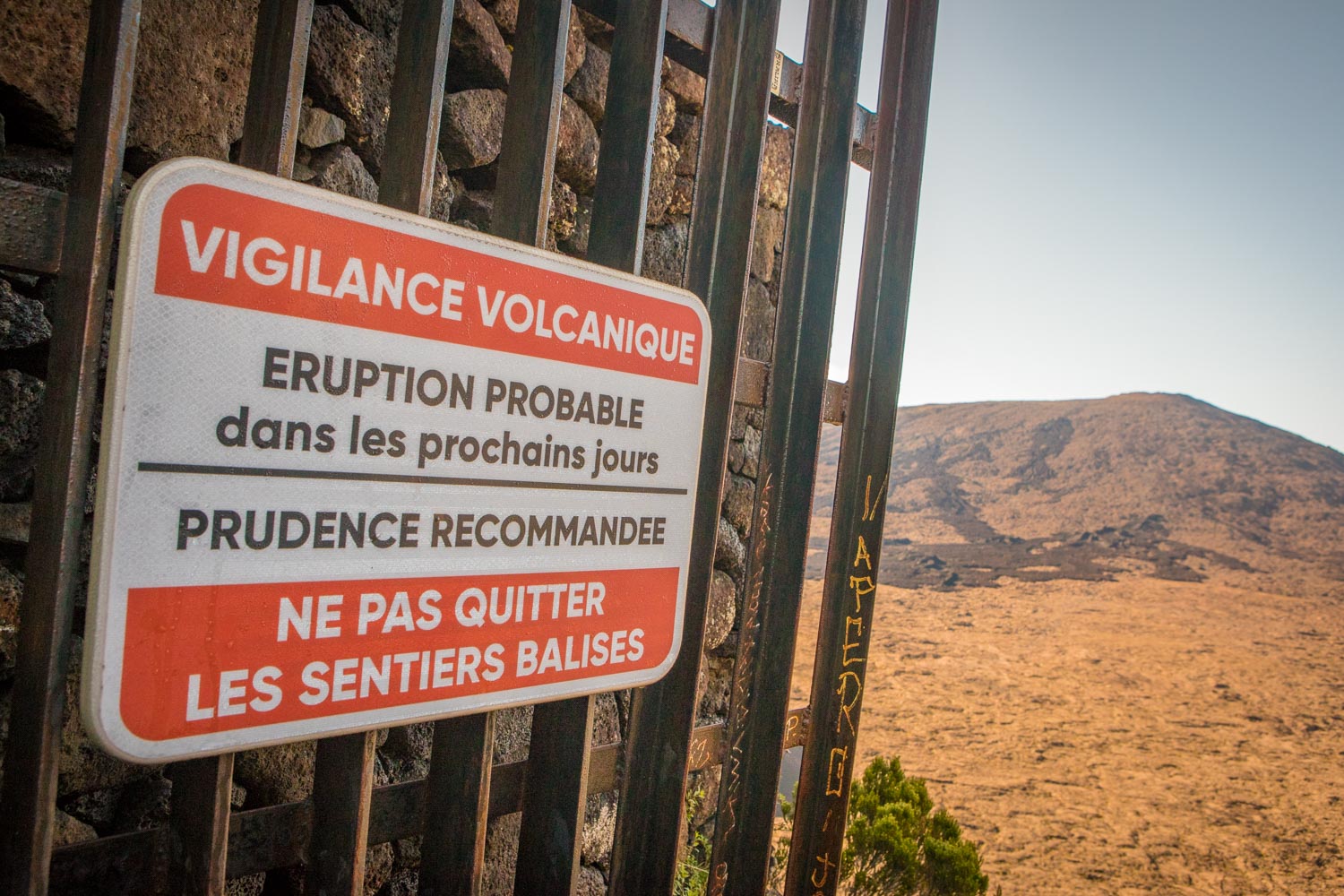MC: Could you describe your work?
Kowalski: We have the volcano Piton de la Fournaise and another one on the island of La Mayotte under observation. We collect various data-points there in real time. And we do this day and night.
MC: How early or accurately can you predict an eruption?
Kowalski: We can measure when the volcano refills with magma, how it grows, whether cracks appear in the volcano and whether magma rises to the surface. However, we only provide observations, no predictions.
In some places, the ground moves up to two meters per year.
MC: How do you measure it?
Kowalski: We have many detectors. The system is called GNSS (Global Navigation Satellite System) and is comparable to GPS. We measure the position of many detectors distributed all over the volcano. When the pressure increases, the measurement points expand. We can measure this in an accuracy of a few millimeters only. We also measure at other locations on the island. In some places near Salazie, the GPS points, and thus the ground, move by up to two meters per year. There you can discover folds in the road. They are signs of a landslide, which happens gradually. That’s why the road is continuously under repair.
Philippe Kowalski, Deputy Director of the Volcano Observatory, at his workplace.
MC: During the big eruption in 2007, a lot of lava flowed out into the sea. Did that have any repercussions?
Kowalski: The lava heated the water, up to a depth of several hundred meters. Many fish panicked and ascended too quickly, causing air bubbles in their veins. This caused the blood to pool and the fish died.
By the reaction of water, carbon, and chlorine, hydrochloric acid was also formed. Clouds of hydrochloric acid emerged. Later these coulds fell as acid on the island. People felt it as itchy skin. Steel roofs were damaged, and a forest near Saint-Philippe turned brown.
We know very little about what is going on inside the earth.
MC: What fascinates you about volcanism?
Kowalski: Geology is something that happens very very slowly. Within our lifetime, we can hardly see any big developments. But here, in volcanoes, processes sometimes happen within minutes or seconds. We can watch this happen, and that makes it special. We live on the surface of the earth, but we know very little about what is going on inside the earth. Volcanism makes this inside world a little more visible.
Piton de la Fournaise (background) is one of the most active volcanoes in the world. An eruption can be expected at any time.
MC: What is the geological future of the island?
Kowalski: Reunion is gradually getting lower because of erosion, but the lagoon around the island is growing. In a few hundred thousand years, it will look like Mauritius here. Even later, like the Maldives. At some point, La Réunion will disappear. And all that will be left are reefs.
At some point, La Réunion will disappear. And all that will be left are reefs.
MC: Do you have an insider tip for volcano fans?
Kowalski: I suggest you skip the summit of Piton de la Fournaise. On the way towards Pas-de-Bellecombe, there is a pass on the right. This leads to the site of a recent eruption. There you can discover completely different colours and shapes.
Read now:

Pure inspiration
My new media kit 2025
< 1 Min.In this brand new 28-page media kit, I show you my work as an adventure journalist and speaker: Expeditions, travels, challenges – everything that excites me. Let yourself be inspired.

An island like no other
La Reunion – Like a trip around the world in five days
26 Min.Where else in the world can you splash in the sea in the morning, walk in the rainforest at noon, and marvel at a desert with an active volcano in the afternoon? Reunion offers the most diverse variety of landscapes, vegetation and cultures that I know.

A piece of France in the Indian Ocean
La Réunion photo gallery
2 Min.Fantastic hikes through deep valleys, long lava tunnels and high volcanoes – that is La Réunion. While roaming the island, I was amazed – also at the varied bird life, crooked trees, oddball volcanologists and the scent of what is probably the best vanilla in the world.


